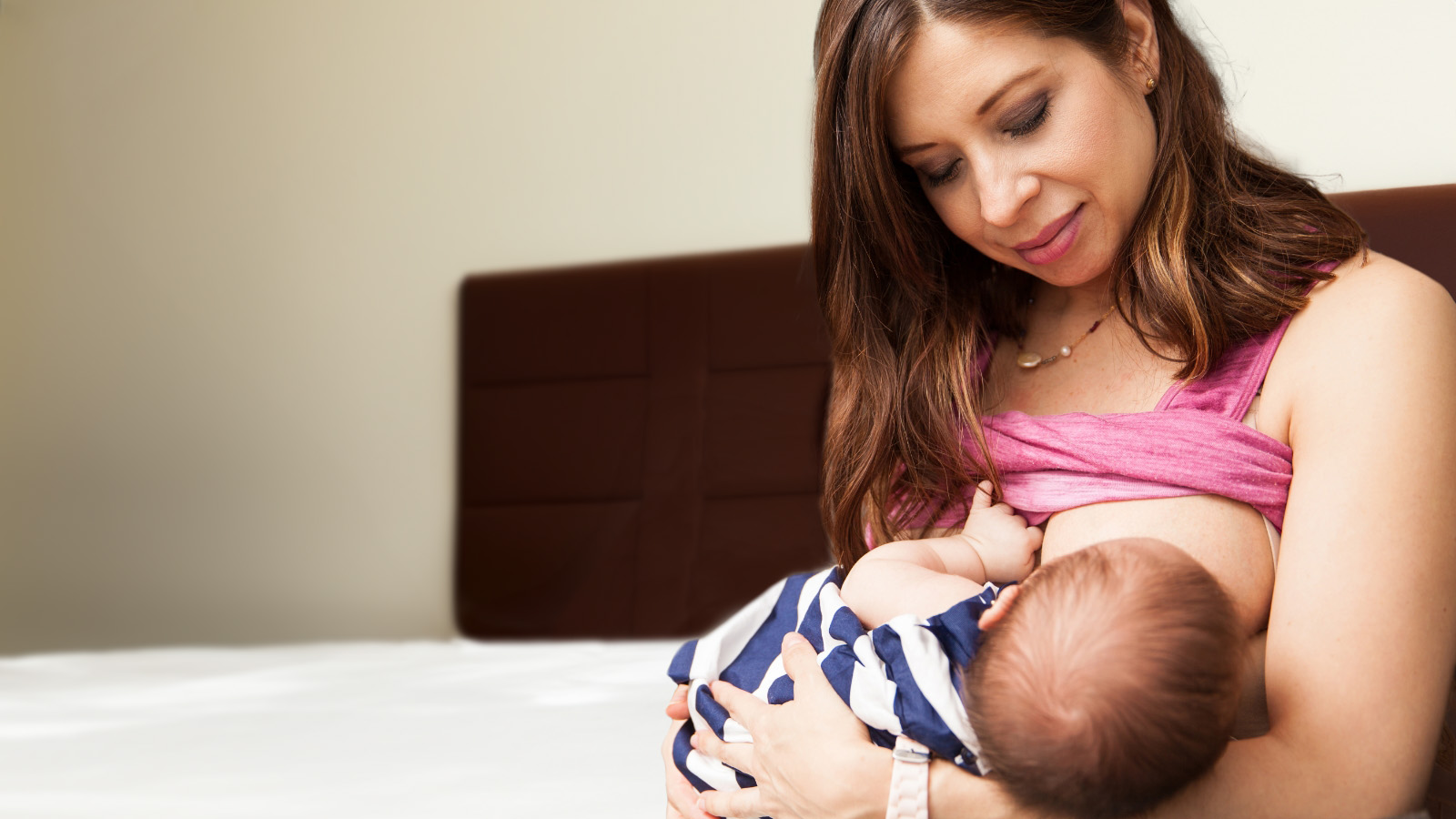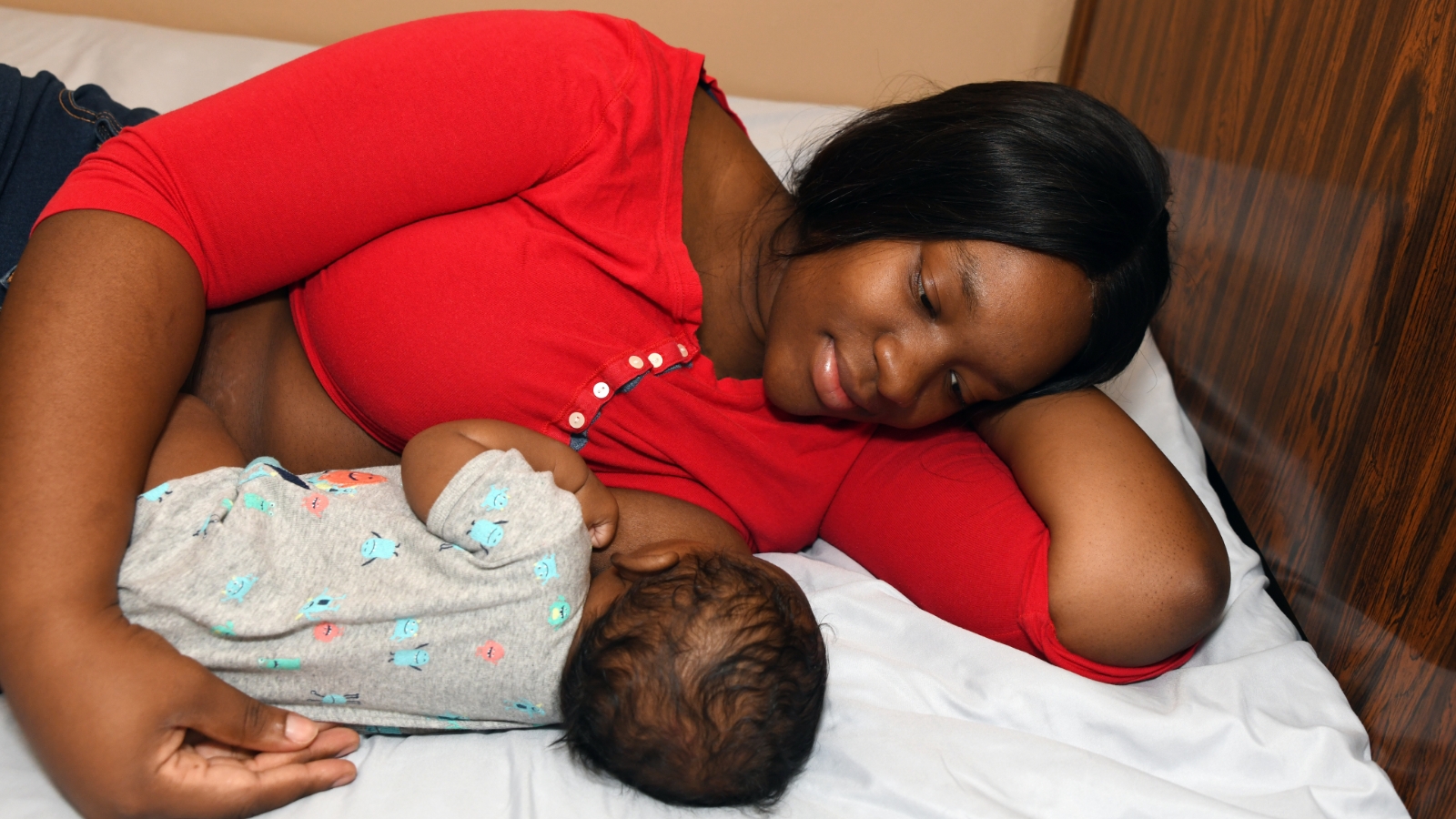Feed your baby human milk.

Breastfeeding or feeding babies human milk offers several benefits for moms and babies.
Among the benefits for moms are reduced risk for certain conditions, such as diabetes and some cancers, later in life. Benefits for babies include protection from some infections and illnesses and a reduced risk of Sudden Infant Death Syndrome (SIDS).
The American Academy of Pediatrics recommends feeding only human milk—with no added formula or other foods or liquids (sometimes called exclusive breastfeeding)—for at least baby’s first 6 months, unless breastfeeding is not ideal due to health conditions.1 Parents can feed human milk through direct breastfeeding or by feeding human milk pumped from the breast.
Research shows that babies who are breastfed or fed human milk are at a reduced risk for SIDS compared with babies who were never breastfed or fed human milk.1,2
The longer a baby is exclusively breastfed or fed human milk, the lower the baby’s risk of SIDS. Feeding baby any human milk, even with other foods added, is more protective than not feeding human milk at all.

How can I practice safe sleep when breastfeeding?
Safe sleep recommendations and breastfeeding best practices work together to reduce baby’s risk of SIDS and other sleep-related death.
Room sharing is key to reducing baby’s risk when breastfeeding. Keeping your baby’s sleep area in your room, next to your bed, allows for easier feeding and comforting, especially overnight. When you are finished feeding, you can put baby back in their own sleep area made for infants, like a safety-approved crib* or bassinet, next to your bed.
You should also think about how tired you are before you start a feeding session. If there is any chance you might fall asleep while breastfeeding, make some changes to your environment to help reduce risks:
- Avoid feeding baby on couches and armchairs. Couches and armchairs can be very dangerous for baby, especially if adults fall asleep while feeding, comforting, or bonding with baby on these surfaces. Couches and armchairs carry a very high risk for other sleep-related deaths from entrapment and suffocation.
- If you bring baby into your bed for feeding or comforting, remove all items and bedding from the area. Pillows and soft comforters, quilts, pillows, and blankets in the adult bed put baby at risk for suffocation, strangulation, or entrapment if the adult falls asleep during feeding. When you are finished breastfeeding, put baby back in a separate sleep area made for babies, like a safety-approved crib* or bassinet, that is close to your bed.
- Ask someone to stay with you while you’re breastfeeding. The person can wake you up if you start to doze off or can put the baby in a separate sleep area for you if you fall asleep. If you don’t have someone to help you stay awake, set a timer to go off every few minutes to keep you awake.
- If you fall asleep while feeding baby in your bed, place them on their back in a separate sleep area made for babies as soon as you wake up. Evidence shows that the longer a parent and baby share the same bed, the greater the risk for sleep-related infant deaths.
* The Consumer Product Safety Commission has more information on crib safety at https://www.cpsc.gov/SafeSleep.


